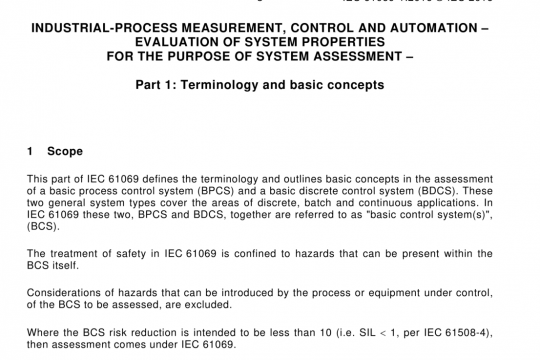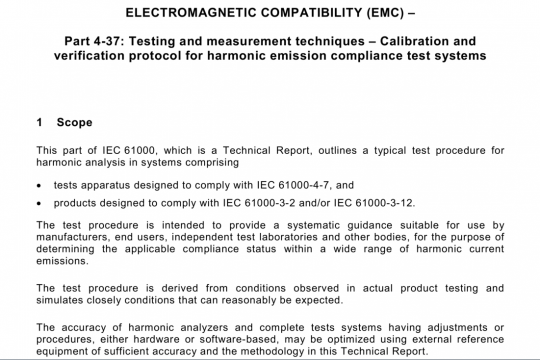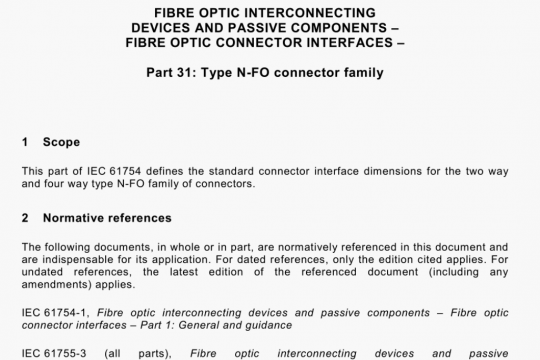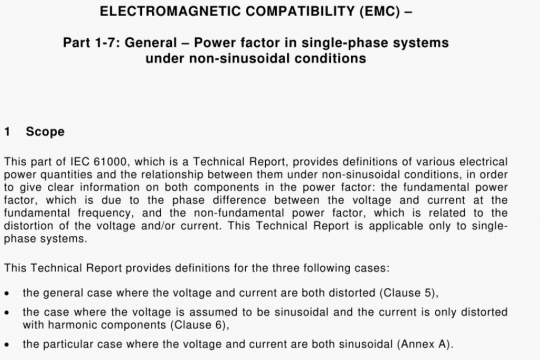BS EN IEC 62853 pdf free download
BS EN IEC 62853 pdf free download.Open systems dependability.
4 Open systems dependability
4.1 Open systems
Open systems have the following characteristics [11].
— They are large, complex and interconnected.
— They can include black box components.
NOTE 1 A black box component is a component whose users do not know its implementation details and cannot control its functionality and interface.
— Their purpose, objectives, environment and actual performance are not determined and change through their lives. Unpredictable changes of user requirements, service objectives, services received via network, black box components, technological basis, etc., are commonplace.
— Their boundaries, functions and structure are ever-evolving and perceived differently by different stakeholders. Preventing them from becoming vague requires particular effort.
— Accountability is vital in their system life cycle and for risk control, but it needs particular effort to establish because of lack of effective central control.
— Understanding of the systems and their risks by their stakeholders is neither complete nor certain at any given time.
— The possibility of failures due to an incomplete understanding of the systems, unanticipated events and changes cannot be eliminated or predicted. Systems need to be resilient, need to have risk controls including error proofing, need to be able to recover from failures and need to be able to adapt to prevent recurrence.
— Achievement of dependability requires an iterative approach and depends on integration of the system operation and development. Performing dependability activities throughout the system life cycle and iterating them as often as needed is particularly important for open systems.
NOTE 2 Some of these features are shared with so-called “system of Systems” [12], (13] and “unbounded or weakly bounded systems”.
NOTE 3 Depending on a particular point of view, most systems have these features to some, possibly negligible, degree. A system is an open system when these features of the system are significant for the discussion at hand regardless of its being a system of systems.
A system necessarily exchanges services with a wide variety of other interconnected, independently managed systems. These surrounding systems are managed according to their own principles and stakeholders, and their interfaces are subject to change for various reasons. The system must serve diverse stakeholders. Each stakeholder has different objectives and there might be no single authority over the system: moreover, the objectives of the system and the surrounding systems change with time. The conditions for the system, such as requirements and constraints, change frequently and unpredictably. Thus, there are uncertainty and incompleteness about these conditions and they cannot be understood completely at any given time.
Since an open system changes continuously through its life, the design process, as modelled by the spiral product development model, will to some extent continue during the whole lifetime of the system.
Moreover, uncertainty and incompleteness are also present within the system itself, such as with respect to its functions, internal structure, and the boundary. Its subsystems are often managed by different parties and those involved in integration and coordination of the system boundaries might not have complete knowledge and control of them. Services and components might be added to or removed from the system during its operation by/for various stakeholders. This dynamic nature makes the system boundary, functions and structure ambiguous in practice, even if there is no ambiguity in theory at any specific time from a specific point of view.BS EN IEC 62853 pdf download.




